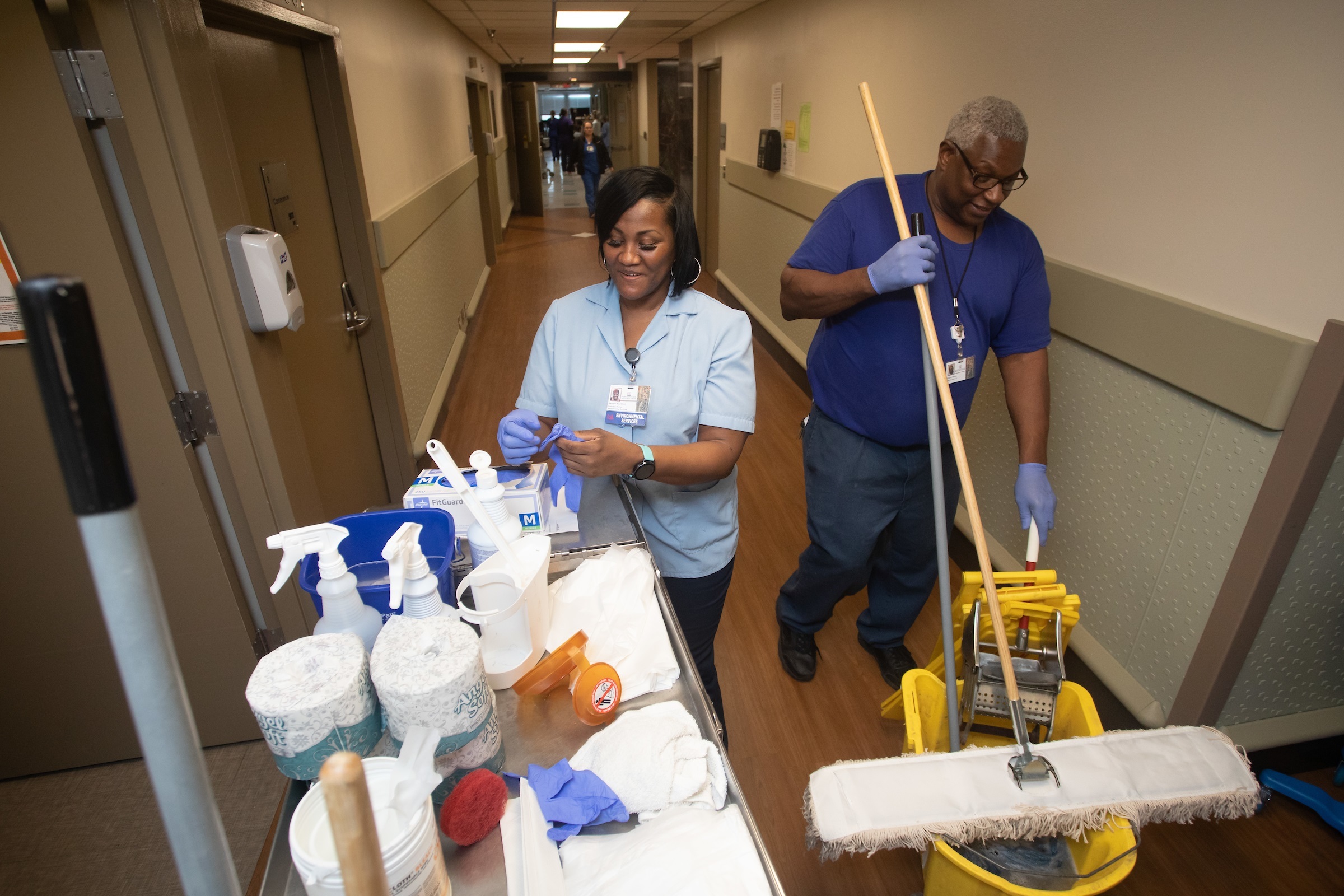
New system helps USA Health hospitals manage patient flow
A system now in place at USA Health hospitals gives the USA Health Transfer Center a bird’s-eye view of patient traffic flow with the goal of managing bed capacity more efficiently to provide critical services to the region.
By Carol McPhail

A system now in place at USA Health hospitals gives the USA Health Transfer Center a bird’s-eye view of patient traffic flow with the goal of managing bed capacity more efficiently to provide critical services to the region.
The system, called TeleTracking, was introduced at University Hospital in November and at Children’s & Women’s Hospital in January.
“TeleTracking has provided us with a more efficient method of managing beds, patients and environmental services in both hospitals,” said Mark Caten, Transfer Center nurse manager. “We can see the ED, and Labor and Delivery, and get beds ready for the next patient.”
For patients, it means less waiting. For referring physicians, it means easier transfers to access USA Health’s unique services.
While TeleTracking works mostly behind the scenes, it has a significant presence on the second floor at University Hospital, where computer monitors line the desks and walls of the Transfer Center, giving it a command center feel. Here, staff can view patient flow at the hospitals in real time.
A year ago, University Hospital implemented a surge plan that includes a checklist to enable staff to monitor bed status and recommend actions based on surge level. TeleTracking takes that effort to the next level by helping departments operate more effectively while managing the plan.
“The implementation of a surge plan has dramatically improved daily procedures for managing capacity,” said Sheri Salas, director of clinical resources at University Hospital.
At both hospitals, the new system has streamlined the discharge process, an important component of patient flow. In the past, managing patient discharge status required Transfer Center staff to review information from various systems without a clear overall picture. “TeleTracking allows this process to be tracked from beginning to end with a view of all beds,” Salas said. “Processes have been automated that were once manual and labor intensive.”
For instance, when a physician enters an order to discharge a patient, a request for transport is made, and the system automatically alerts environmental services to prepare the room for the next patient. Most actions and communications can be completed using a handheld android device.
“All departments are impacted in such a way that it helps the overall patient throughput in our organization,” said Rosemary White, director of environmental services at USA Health. “For me, it’s one-stop shopping to see when a room becomes available to clean, our response time to clean it and the overall time versus the manual paper process prior to implementation.”
Salas said that the new system enables USA Health to accept referrals more quickly and efficiently. “Our referral team now has the ability to utilize their time facilitating transfers more efficiently in order to ensure our hospitals rapidly provide services for patients needing care,” she said.
The system’s analytics can also inform administrative decisions on how to improve a myriad of processes. “Are we in compliance with our milestones? Do we have enough wheelchairs?” Caten said. “In order to make changes in healthcare, you need the data.”


